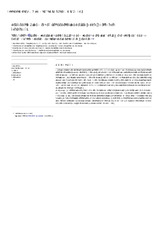Mostrar el registro sencillo del ítem
Concentric Ring Method for generating pollen maps. Quercus as case study
| dc.contributor.author | Oteros, José | |
| dc.contributor.author | Valencia, Rosa María | |
| dc.contributor.author | Río, Sara del | |
| dc.contributor.author | Vega, Ana María | |
| dc.contributor.author | García-Mozo, H. | |
| dc.contributor.author | Galán, Carmen | |
| dc.contributor.author | Gutiérrez, Pablo | |
| dc.contributor.author | Mandrioli, Paolo | |
| dc.contributor.author | Fernández González, Delia | |
| dc.date.accessioned | 2024-02-08T20:21:04Z | |
| dc.date.available | 2024-02-08T20:21:04Z | |
| dc.date.issued | 2017 | |
| dc.identifier.issn | 0048-9697 | |
| dc.identifier.uri | http://hdl.handle.net/10396/27332 | |
| dc.description.abstract | Mapping pollen concentrations is of great interest to study the health impact and ecological implications or for forestry or agronomical purposes. A deep knowledge about factors affecting airborne pollen is essential for predicting and understanding its dynamics. The present work sought to predict annual Quercus pollen over the Castilla and León region (Central and Northern Spain). Also to understand the relationship between airborne pollen and landscape. Records of Quercus and Quercus pyrenaica pollen types were collected at 13 monitoring sites over a period of 8 years. They were analyzed together with land use data applying the Concentric Ring Method (CRM), a technique that we developed to study the relationship between airborne particle concentrations and emission sources in the region. The maximum correlation between the Quercus pollen and forms of vegetation was determined by shrubland and “dehesa” areas. For the specific Qi pyrenaica model (Q. pyrenaica pollen and Q. pyrenaica forest distribution), the maximum influence of emission sources on airborne pollen was observed at 14 km from the pollen trap location with some positive correlations up to a distance of 43 km. Apart from meteorological behavior, the local features of the region can explain pollen dispersion patterns. The method that we develop here proved to be a powerful tool for multi-source pollen mapping based on land use. | es_ES |
| dc.format.mimetype | application/pdf | es_ES |
| dc.language.iso | eng | es_ES |
| dc.publisher | Elsevier | es_ES |
| dc.rights | https://creativecommons.org/licenses/by-nc-nd/4.0/ | es_ES |
| dc.source | Oteros, J., Valencia, R., Del Río, S., Vega, A. M., Garcı́a-Mozo, H., Galán, C., Gutiérrez, P. R., Mandrioli, P., & Fernández-Gonzalez, D. (2017). Concentric Ring Method for generating pollen maps. Quercus as case study. Science Of The Total Environment, 576, 637-645. https://doi.org/10.1016/j.scitotenv.2016.10.121 | es_ES |
| dc.subject | Concentric Ring Method | es_ES |
| dc.subject | Quercus | es_ES |
| dc.subject | Geostatistics | es_ES |
| dc.subject | Pollen index | es_ES |
| dc.subject | Aerobiology | es_ES |
| dc.subject | Map | es_ES |
| dc.title | Concentric Ring Method for generating pollen maps. Quercus as case study | es_ES |
| dc.type | info:eu-repo/semantics/article | es_ES |
| dc.relation.publisherversion | https://doi.org/10.1016/j.scitotenv.2016.10.121 | es_ES |
| dc.relation.projectID | Gobierno de España. CGL2014-52556-R | es_ES |
| dc.rights.accessRights | info:eu-repo/semantics/openAccess | es_ES |

